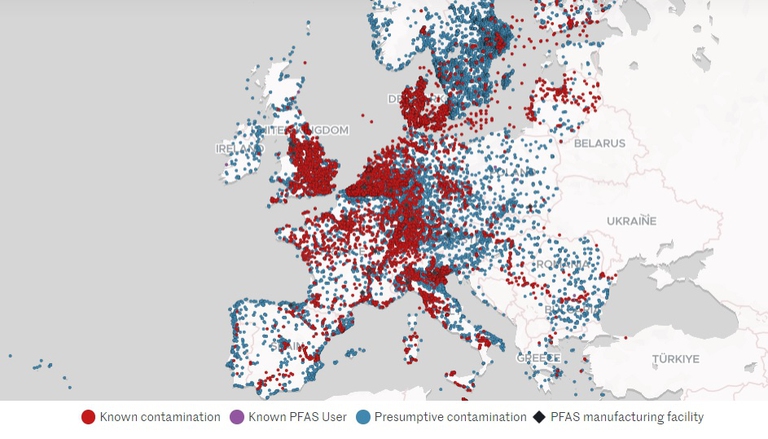https://www.lifegate.it/pfas-acqua-potabile-altroconsumo
- |
- In Europe there are more than 18 thousand sites contaminated by Pfas, the perfluoroalkyl substances widely used by industry.
- Especially after the health emergency in Veneto, it is reasonable to ask whether Pfas are also present in tap water, after purification treatments.
- Altroconsumo collected and analyzed water samples from 38 drinking fountains in 34 Italian cities:none of them contained Pfas.
The presence of Pfas in water it is one of those topics that cannot leave anyone indifferent.Especially knowing that in Veneto for decades there was the most extensive contamination in Europe, both in terms of quantity of chemical compounds and because it extends to aquifers, rivers and aqueducts.They therefore sound reassuring results of an investigation conducted by Altroconsumo:after collecting and analyzing water samples from 38 drinking fountains in 34 Italian cities, the association reports that none of them contained Pfas.
What are PFAS and why do they represent a risk
With the deadline Pfas (perfluoroalkyl substances) refers to a large family of synthetic chemical compounds, exploited for years by various industries by virtue of their exceptionality resistence to heat, water, stains and grease.Pfas has therefore been widely used to produce waterproof fabrics, coatings for food containers, non-stick pans, guitar strings, fire-fighting foams and more.
Precisely because of these properties, Pfas they accumulate in the environment and in living organisms, so as to practically never degrade.Which represents a serious health risk, because they are endocrine disruptors, that is, they alter the hormonal balance.Various studies link exposure to Pfas to a long series of pathologies and disorders, such as kidney and testicular cancer, liver damage, thyroid problems, obesity, diabetes, reduced fertility and impaired immune system.

The omnipresence of Pfas in the environment
That i Pfas contaminate our territory it's a reality.A very detailed international journalistic investigation, published in 2023, made the map known 17 thousand sites polluted by Pfas across Europe, including Italy.A group which also includes 2,100 hotspots, i.e. areas in which the concentration is particularly high.On the other hand, there are 21 thousand industrial plants (closed or still in operation) that use or emit Pfas.
Among the NGOs that are fighting for permanently ban PFAS there is Greenpeace Italy, whose investigative unit examined data on the quality of drinking water in various Italian regions. In Lombardy, for example, it detected Pfas in 738 samples out of almost 4 thousand analyzed between 2018 and 2022.In the vast majority of cases, however, he was unable to specify whether the water had been taken before or after the purification treatments.
What emerges from the Altroconsumo survey
Precisely to respond to the legitimate doubts of citizens, who are wondering whether to trust themselves in drinking tap water, the association Altroconsumo between June and July 2024 he took 38 water samples from public fountains located in the historic centers of 34 Italian cities (one per city, therefore, with the exception of Milan, Rome, Turin and Naples where two samples were taken in different areas).He then analyzed them in the laboratory to look for thirty different Pfas: no sample contained them, not even in the minimum quantity that can be detected with the available analysis tools, equal to five nanograms per liter.
What does the Italian law provide for PFAS in drinking water?
Today in Italy the law still allows Pfas to be produced and used in industries.At the moment the institutions of the European Union are discussing the possibility of limiting them through the review of Reach regulation on chemicals.A hypothesis openly criticized by Draghi report on European competitiveness, for which such a ban would hinder the industries of batteries, electrolysers and refrigerants for heat pumps.
In Italy, law decree n.18 of 23 February 2023 introduces new safety parameters for drinking water, implementing the European Directive 2020/2184.The text provides for a limit of 100 nanograms per liter for the overall presence of 24 of these substances and 500 for the sum of Pfas, but in Italy it will only come into force in 2026.The new ones are even more severe US Environmental Protection Agency (EPA) guidelines:for Pfoa and Pfos the threshold is zero.
